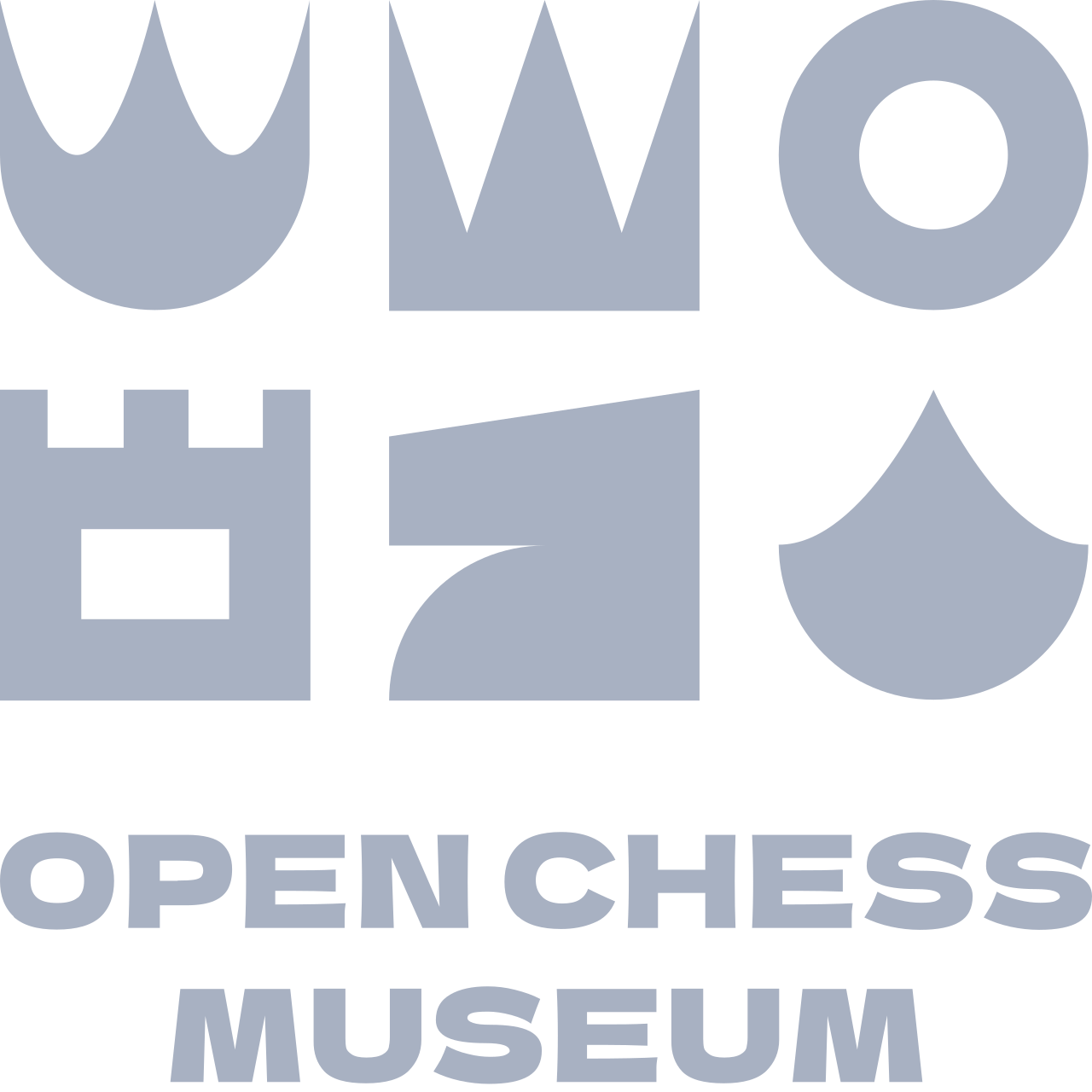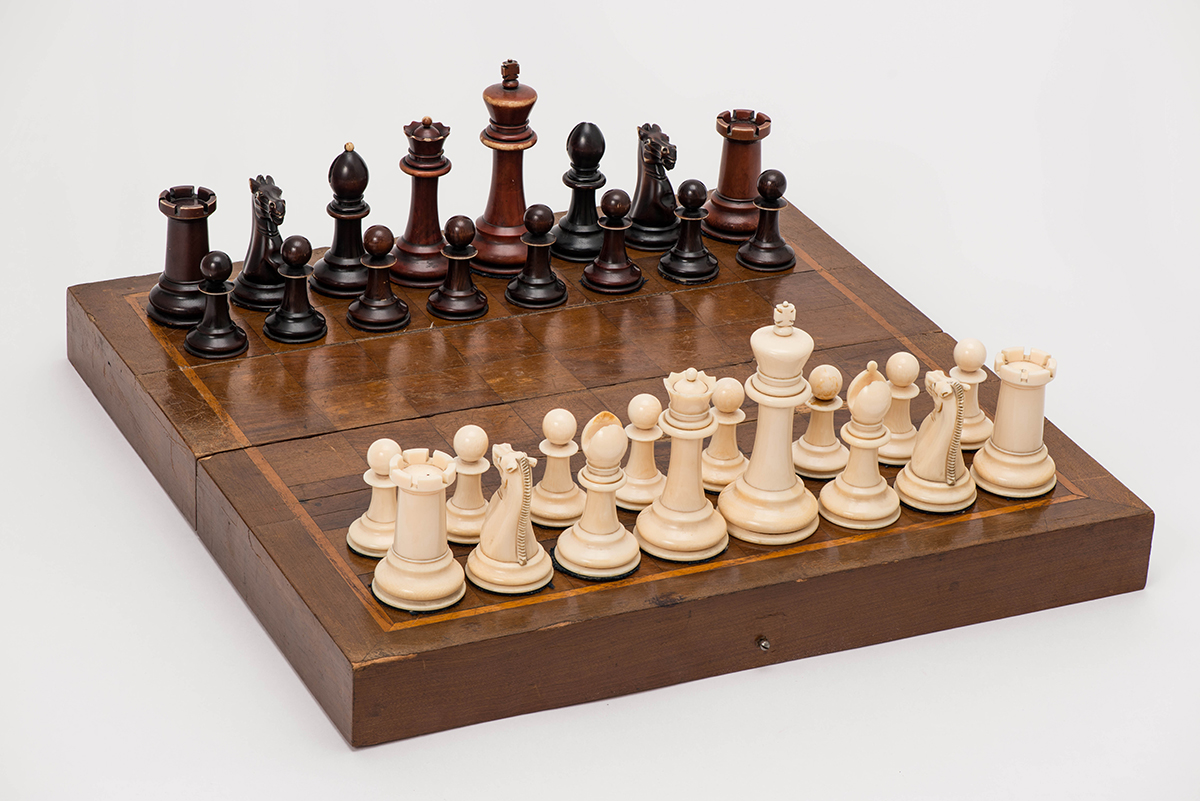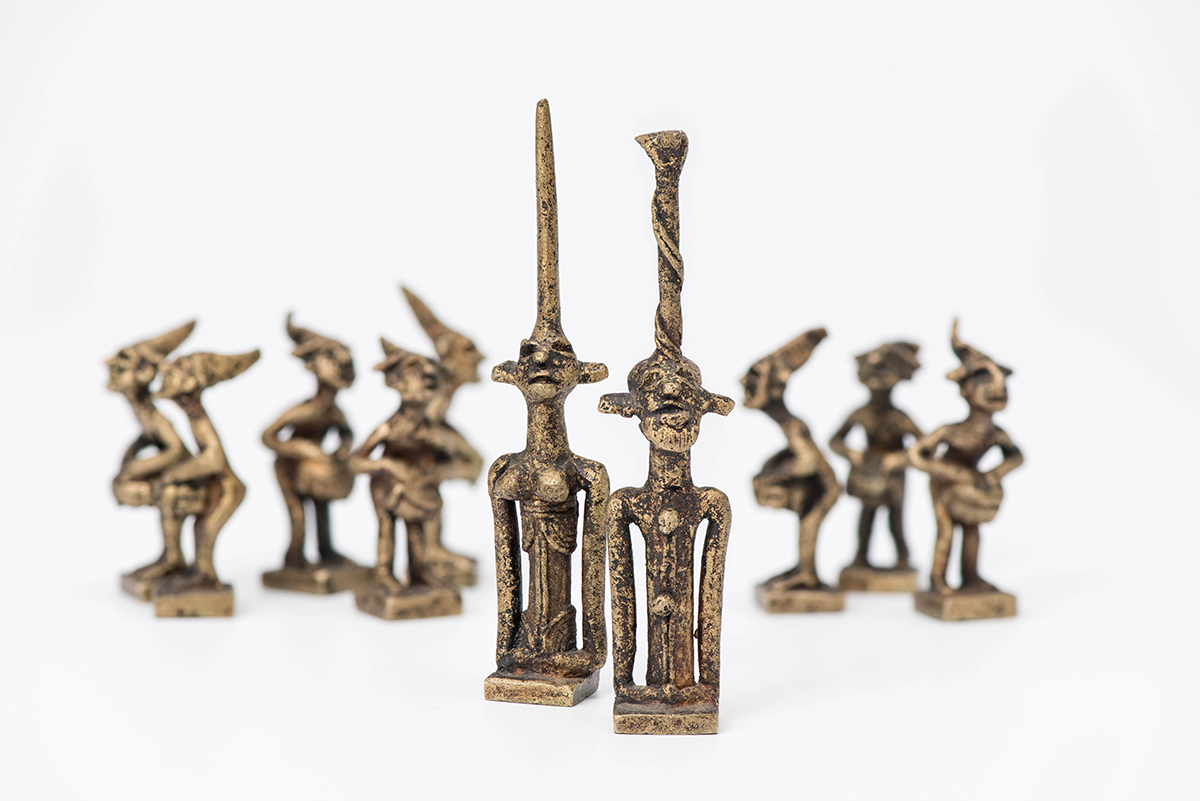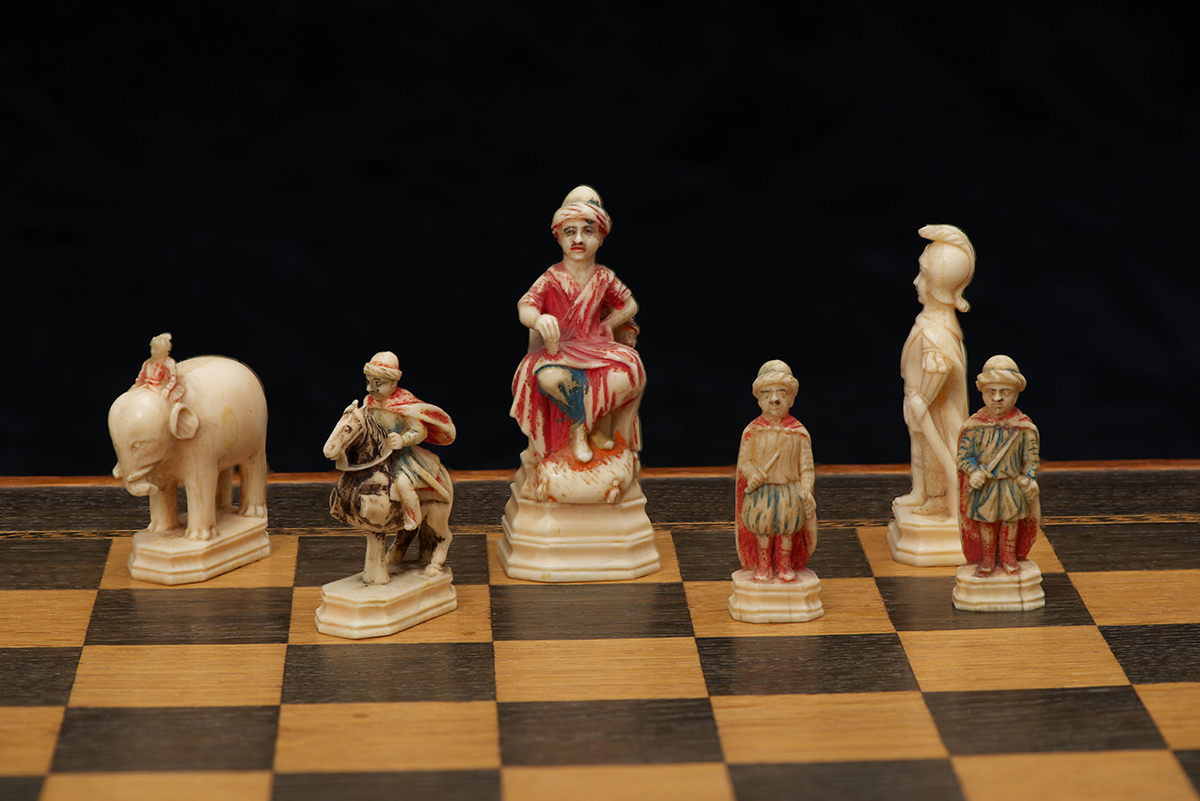Staunton chess set
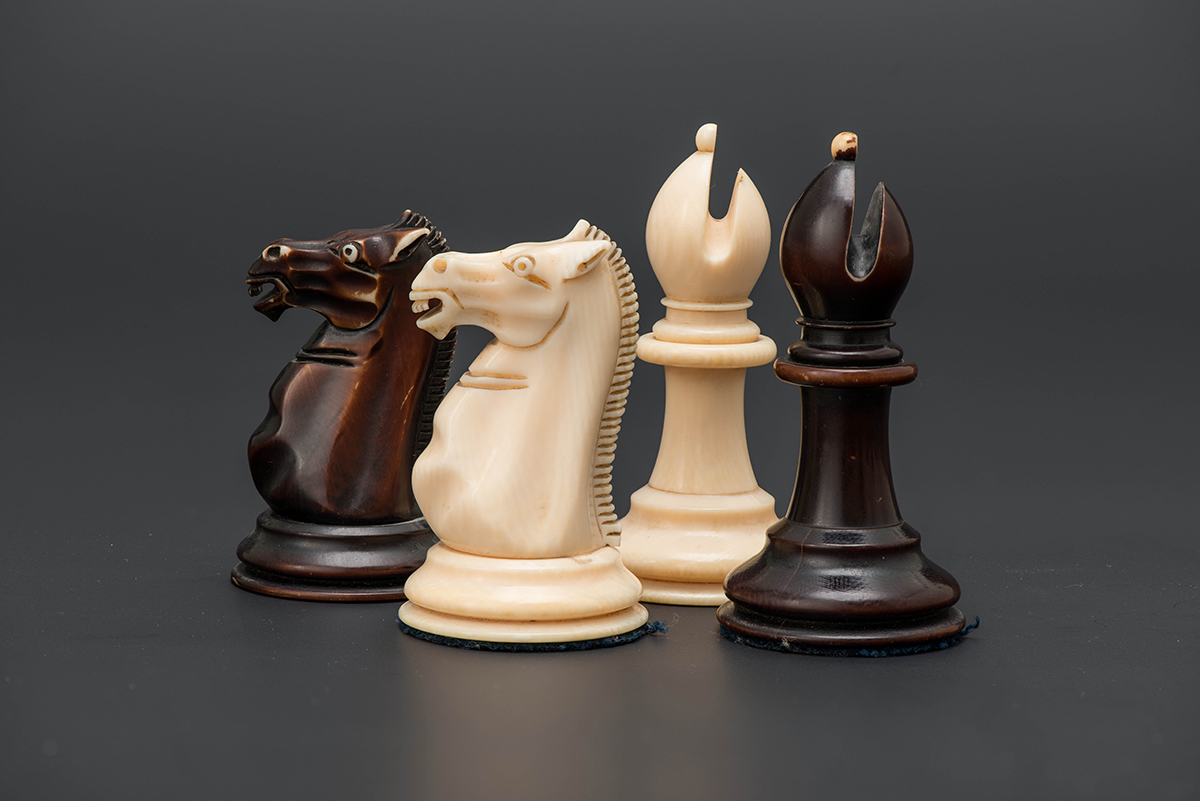
Period
1950sMaterial
Polymers
Location
Russia, Moscow, Chess Museum of the Central Chess Club
Author
Nathaniel Cooke
Category
The GameSubcategory
Chess sets
Curious fact
The knight, represented by a horse’s head and hand-carved, was copied from the ancient Parthenon frieze showcased at the British Museum
This style of chess pieces, which is common today, was unusual and even provocative when the first set was produced in the mid-19th century. Instead of finely carved and delicate pieces that often broke during games, the set offered neat, recognizable, and very solid pieces. It was beautiful and suitable for mass production.The set was designed by Nathaniel Cooke, while the “uncrowned champion” Howard Staunton named it after himself. He advertised the new product in his newspaper chess column and personally signed the sets’ authenticity labels (red for ivory and green and white for fine wood). Regardless of the material, the set’s unique style was immediately recognizable, making Staunton a household name. It combined apparent simplicity with the discreet luxury of Victorian England.A distinctive feature of a real Staunton set is the knight, represented by a horse’s head that was hand-carved. Cooke copied it from the ancient Parthenon frieze showcased at the British Museum. Over time, many imitators of this successful design emerged, making the set, in both its sophisticated and simplified versions, quite common today.Since 1924, Staunton sets have been used in FIDE tournaments. Polymers replaced ivory as a material. Still, there are collectors who are extremely passionate about the “Rolls Royce of chess pieces” and who exclusively collect Staunton chess sets.

